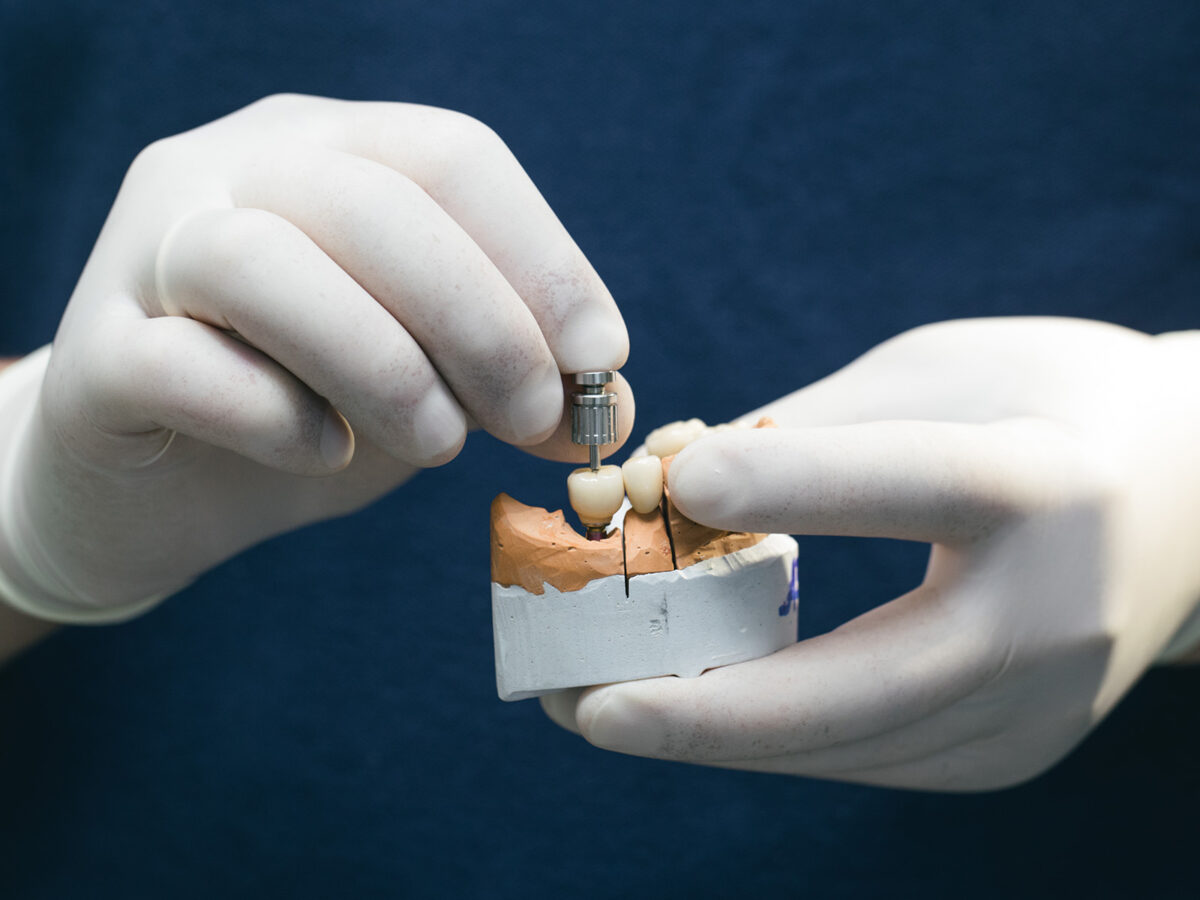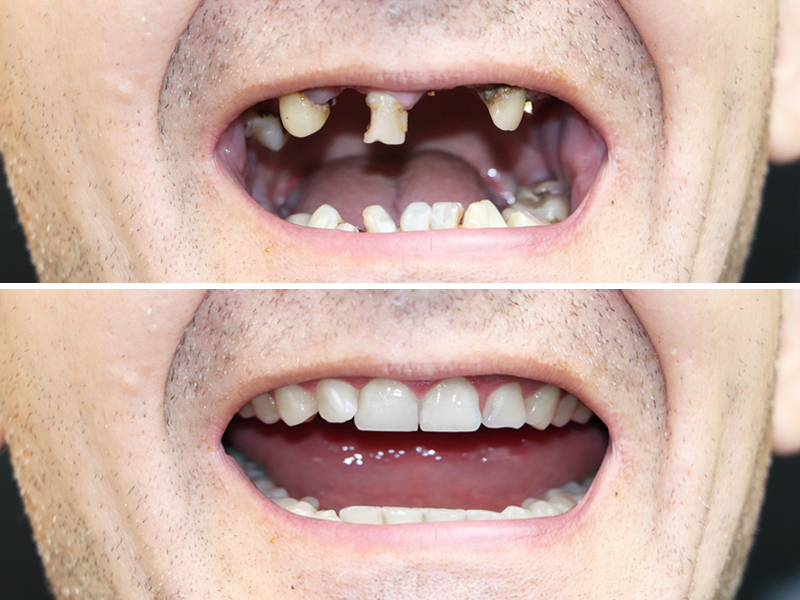Restorations made of porcelain fused to metal (PFM) have been used extensively in dentistry due to their combination of strength, durability, and natural looks for many years. Porcelain-fused-to-metal (PFM) restorations have the strength and appearance of natural teeth but are made from a metal base covered by porcelain. Here, we’ll look closer at PFM restorations, discussing their make-up, advantages, and potential uses in contemporary dental practice.
Main parts of PFM
Porcelain-fused-to-metal (PFM) restorations comprise two main parts: a metal framework and a porcelain coating.
- High-noble metal alloys, such as gold or palladium-based, or non-precious metal alloys, such as nickel-chromium or cobalt-chromium, are commonly used to construct the metal substructure. The metal framework beneath the restoration offers strength, steadiness, and support.
- The metal framework is covered with porcelain that has been meticulously sculpted and shade-matched to mix in with the patient’s natural teeth. The porcelain layer provides the aesthetic look, miming natural tooth enamel’s colour, translucence, and texture.
Advantages of PFM Restorations
- Strength and Durability PFM restorations are ideal for restoring teeth in regions subjected to considerable biting forces because of their metal substructure’s remarkable strength and durability. PFM restorations are durable and dependable since they can withstand much stress without breaking.
- Aesthetics: PFM restorations can be crafted to look just like natural teeth, thanks to their porcelain covering. Porcelain can be shade-matched to the surrounding teeth, creating a restoration that looks and functions like your original teeth.
- Flexibility: PFM restorations can be used for many dental restorations, from crowns to fixed bridges to restorations supported by dental implants. They are adaptable for everything from a single-tooth restoration to a full-mouth makeover.
- Biocompatibility: The metals utilised in PFM restorations’ metal substructure are biocompatible, meaning they are well-tolerated by the body and pose little threat of allergic reactions.
To establish an excellent marginal fit or a tight seal between the restoration and the tooth’s natural structure, PFM restorations are capable of.
- This lessens the likelihood of subsequent deterioration or problems brought on by bacterial invasion.
PFM Restorations and its Benefits
PFM restorations can be used for various situations, including a. dental crowns, which are frequently used to repair badly decaying or broken teeth. They’re great for front and back teeth because of their durability and good looks. Restoring teeth in the back of the mouth, where the chewing forces are the greatest, with PFM crowns is highly advantageous.
- PFM restorations can be utilized in fixed dental bridges, another method of tooth replacement. The porcelain coating gives the bridge a natural look, while the metal framework gives it the strength and stability it needs to stay in place. PFM bridges can replace a single lost tooth or multiple teeth naturally and aesthetically pleasingly.
- Replacement teeth using PFM restorations with dental implants are called implant-supported restorations. The metal framework is meant to fit snugly onto the implant abutment, allowing the porcelain crown to rest firmly and securely. The aesthetic and functional performance of PFM implant-supported restorations are unparalleled.
- The thin metal margin at the gumline of PFM restorations may be visible in some circumstances, especially in gum recession or thin gingival tissues. Patients with exceptionally high standards for dental aesthetics may be concerned about this. However, advances in dental materials and procedures have significantly reduced the amount of metal in PFM restorations today.
- Some people may have unusual sensitivities or allergies to the metals used in PFM restorations. Notifying the dentist of any metal allergies or sensitivities is vital for ensuring that suitable materials are chosen for the restoration.
- While porcelain fused to metal (PFM) restorations have great aesthetics, the porcelain layer can degrade over time and cause subtle changes in appearance. c. In addition, the aesthetic result of the repair may be affected by the opacity of the metal substructure, which may affect its clarity.
Conclusion:
Because of their superior strength, longevity, and aesthetics, porcelain fused to metal (PFM) restorations have become a dental standard. PFM restorations, from single crowns to entire bridges and implant-supported restorations, are dependable due to their metal substructure, which provides stability, and porcelain layer, which creates natural-looking teeth. Despite the growing popularity of all-ceramic restorations, PFM restorations remain a reliable and feasible alternative for patients seeking long-lasting and aesthetically acceptable dental restorations. The best repair for your teeth is the one that you and your dentist decide on together.




